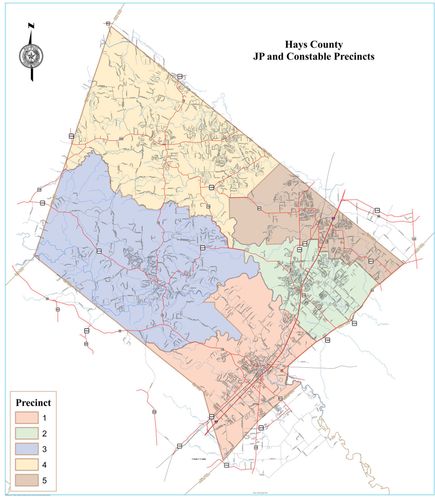Report on the Special Election in DeForest, Wisconsin: An Analysis of Local Governance and Sustainable Development Goals
Executive Summary
A special recall election in the Village of DeForest, Wisconsin, highlights critical challenges at the intersection of public health, water management, and institutional integrity. The election, centered on incumbent Trustee William Landgraf and challengers Stacey Petersen and Alicia Williams, was catalyzed by a controversial decision to cease water fluoridation. This report analyzes the election’s key drivers through the framework of the United Nations Sustainable Development Goals (SDGs), primarily focusing on SDG 3 (Good Health and Well-being), SDG 6 (Clean Water and Sanitation), and SDG 16 (Peace, Justice and Strong Institutions).
Public Health and Water Resource Management: A Conflict of Local Policy and Global Goals
The Fluoridation Decision and its Relation to SDG 3 and SDG 6
The primary catalyst for the recall was a 4-3 vote by the village board, including Trustee Landgraf, to halt the addition of fluoride to the municipal water supply. This action directly engages with two key Sustainable Development Goals:
- SDG 3: Good Health and Well-being: Water fluoridation is widely recognized by public health bodies, including the U.S. Centers for Disease Control and Prevention, as a major public health achievement for preventing tooth decay. The decision to remove fluoride raises concerns about the community’s commitment to ensuring healthy lives and promoting well-being for all residents, a core target of SDG 3.
- SDG 6: Clean Water and Sanitation: While focused on clean water, SDG 6 also encompasses the sustainable management of water resources. The debate in DeForest concerns the optimal management of the public water supply to achieve positive health outcomes, a key aspect of providing safe and accessible water for all.
Candidate Positions on Public Health Policy
The candidates’ stances on the fluoridation issue reflect differing approaches to public health governance:
- William Landgraf (Incumbent): Voted to cease fluoridation, defending his decision as part of his governing record.
- Alicia Williams (Challenger): Has stated she would support restoring fluoride if it reflects the will of the majority of her constituents, emphasizing a need for greater community feedback on public health matters.
- Stacey Petersen (Challenger): Considers the issue divisive and prefers not to revisit the vote, effectively maintaining the status quo of non-fluoridated water while focusing on alternative dental health programs.
Institutional Integrity and Governance: A Challenge to SDG 16
Allegations of Misconduct and the Call for Accountable Institutions
Recall organizers assert that the election transcends the single issue of fluoridation, focusing instead on Trustee Landgraf’s conduct. These concerns directly relate to SDG 16: Peace, Justice and Strong Institutions, which calls for effective, accountable, and transparent institutions at all levels. The recall petition accuses the incumbent of failing to adhere to civility standards and creating an “atmosphere of fear, division and mistrust.”
Specific Incidents Undermining Institutional Trust
Several documented incidents have been cited as evidence of conduct contrary to the principles of accountable governance:
- Intimidation of Residents: Allegations and doorbell camera footage suggest the trustee parked his vehicle outside the homes of residents who had publicly disagreed with him.
- Filing of Professional Complaints: The trustee filed a complaint with a state licensing agency against a dental hygienist who criticized the anti-fluoride vote on social media. The complaint was subsequently dismissed.
- Use of Deceptive Communications: The trustee admitted to using a “burner email account” under the pseudonym “Bob Dean” to contact a resident who supported fluoridation, misrepresenting himself as a “chief national reporter.” This action undermines the transparency and honesty expected of public officials.
- Interaction with Law Enforcement: Police reports indicate the trustee attempted to report a resident for a suspected suspended license (which was found to be valid) following public criticism. In a separate incident, an officer advised the trustee that continued contact with a critic could potentially constitute criminal stalking.
These actions challenge the foundation of SDG 16 by eroding public trust and suggesting a use of public position for personal disputes rather than for the community’s welfare.
Candidate Platforms for Restoring Governance
A Focus on Civility and Accountability
The challengers have positioned their campaigns as efforts to restore professionalism and accountability, aligning with the objectives of SDG 16.
- Alicia Williams: Endorsed by the recall committee, Williams advocates for a code of conduct for trustees and aims to ensure residents can voice concerns without fear of retaliation. Her platform is centered on promoting professionalism and respect within the village board.
- Stacey Petersen: Entered the race to address the growing “divide” in the community. Her campaign focuses on healing, collaboration, and moving past divisive issues to improve local governance.
Conclusion: The Election’s Implications for Sustainable Development
The special election in DeForest serves as a microcosm of broader challenges in achieving sustainable development at the local level. The outcome will determine the village’s immediate direction on public health policy (SDG 3, SDG 6) and, more significantly, set a precedent for the standards of conduct, transparency, and accountability expected of its public institutions (SDG 16). Voters will decide whether to retain the incumbent or to elect a new representative promising to restore civility and trust in local government.
Analysis of Sustainable Development Goals in the Article
1. Which SDGs are addressed or connected to the issues highlighted in the article?
- SDG 3: Good Health and Well-being: The core conflict discussed in the article is the village board’s decision to stop adding fluoride to the public water supply. This directly relates to public health, as the article notes that water fluoridation is a proven method for preventing tooth decay and is supported by major health organizations like the American Dental Association and the CDC.
- SDG 6: Clean Water and Sanitation: The article focuses on the management of the community’s drinking water. The decision about water fluoridation is a matter of water quality management aimed at public health outcomes. This connects to the goal of ensuring the availability and sustainable management of water.
- SDG 16: Peace, Justice and Strong Institutions: The article is fundamentally about local governance, public trust, and institutional accountability. The recall election, accusations of unprofessional conduct, harassment, and lack of transparency against a public official (Trustee Landgraf), and the call for a “code of conduct” all point directly to the health and effectiveness of local government institutions.
2. What specific targets under those SDGs can be identified based on the article’s content?
SDG 3: Good Health and Well-being
- Target 3.4: By 2030, reduce by one third premature mortality from non-communicable diseases through prevention and treatment and promote mental health and well-being. The article highlights water fluoridation as a key preventative measure against tooth decay, a prevalent non-communicable disease. The vote to remove fluoride is a step away from this prevention-focused target.
SDG 6: Clean Water and Sanitation
- Target 6.b: Support and strengthen the participation of local communities in improving water and sanitation management. The entire recall effort, driven by residents’ reactions to the board’s vote on water fluoridation, is a direct example of community participation in water management decisions. Candidate Alicia Williams explicitly states, “Water is something that affects all of us, therefore, I believe all of us should have had a say.”
SDG 16: Peace, Justice and Strong Institutions
- Target 16.6: Develop effective, accountable and transparent institutions at all levels. The recall election is a mechanism for citizens to hold an elected official accountable. The recall petition’s accusation that Landgraf created an “atmosphere of fear, division and mistrust” and his admission to using a “burner email” to impersonate a reporter demonstrate challenges to accountability and transparency.
- Target 16.7: Ensure responsive, inclusive, participatory and representative decision-making at all levels. The article notes that residents felt “disenfranchised” because trustees “didn’t get enough community feedback before voting on fluoride.” The special election is a process for the community to re-assert its desire for representative decision-making.
- Target 16.10: Ensure public access to information and protect fundamental freedoms. The article details accusations of intimidation and harassment by Trustee Landgraf against residents who criticized him, including parking in front of their homes and filing complaints against them. This relates to the protection of fundamental freedoms, such as the freedom to express dissent without fear of retaliation.
3. Are there any indicators mentioned or implied in the article that can be used to measure progress towards the identified targets?
SDG 3: Good Health and Well-being
- Implied Indicator: Prevalence of tooth decay in the community. The article’s reference to the CDC heralding water fluoridation for leading to a “dramatic decline in cavities” implies that the rate of cavities is a key metric for measuring the impact of the board’s decision.
SDG 6: Clean Water and Sanitation
- Implied Indicator: Level of community participation in water management decisions. The recall petition, the high-profile election with three candidates, and the public comments at meetings are all qualitative measures of community engagement in the governance of their water supply.
SDG 16: Peace, Justice and Strong Institutions
- Implied Indicator: Public trust in local officials. The recall petition’s language about a “failure to follow DeForest’s core values for civility and conduct” and creating “mistrust” directly points to a breakdown in public trust, which could be measured through surveys or civic engagement levels.
- Implied Indicator: Number of official complaints or police reports filed against public officials for misconduct. The article explicitly mentions police reports filed by residents against Trustee Landgraf and complaints he filed against a resident, serving as a direct, quantifiable indicator of conflict and perceived misconduct.
- Indicator: Existence of an official and enforced code of conduct for elected officials. Candidate Alicia Williams’s statement that she “would push for a code of conduct to hold trustees accountable” indicates that this is a measurable institutional mechanism that is currently seen as lacking or ineffective.
4. Table of SDGs, Targets, and Indicators
| SDGs | Targets | Indicators |
|---|---|---|
| SDG 3: Good Health and Well-being | Target 3.4: Reduce non-communicable diseases through prevention. |
|
| SDG 6: Clean Water and Sanitation | Target 6.b: Support and strengthen the participation of local communities in improving water management. |
|
| SDG 16: Peace, Justice and Strong Institutions | Target 16.6: Develop effective, accountable and transparent institutions. |
|
| Target 16.7: Ensure responsive, inclusive, participatory and representative decision-making. |
|
|
| Target 16.10: Ensure public access to information and protect fundamental freedoms. |
|
Source: wpr.org







